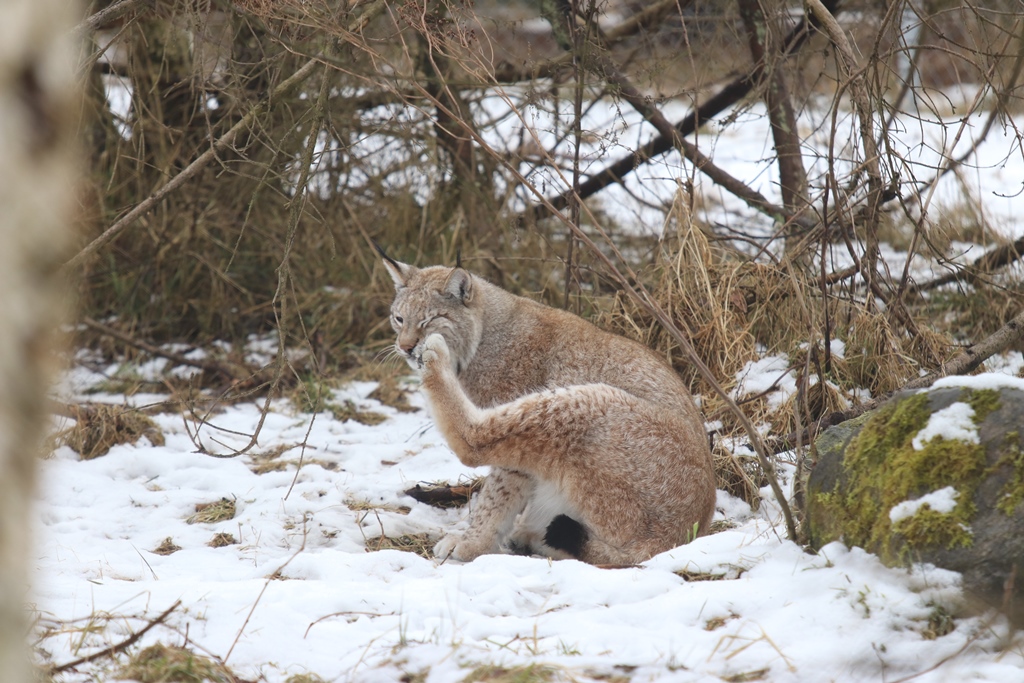This year we are finishing the second decade of this century, so it would be good to prepare for it properly. Fur hygiene is an extremely important element of everyday lynx rituals. They do it extremely carefully, licking and combing every piece of their fur.
During this operation, the falling out hair attach to the rough tongue and migrate to the digestive system. Cats are not able to digest hair, so they usually excrete them together with food residues (droppings). It should also be noted that lynx change their coat to winter and summer. In summer, the fur is much thinner, it changes color to more orange. At first glance, it would seem that such a color stands out from the ubiquitous green, but this is only appearances. When the lynx perches among the grasses and bushes, it is almost invisible. In winter, the cover becomes thicker and more fawn. It is very difficult to spot a lynx among snow and frozen vegetation. In this way, nature has equipped this cat with one of the important elements useful for getting a meal. Because lynx hunt alone, camouflage is very important, it allows the animal to blend in surroundings and make the potential prey do not see the predator approaching it.










